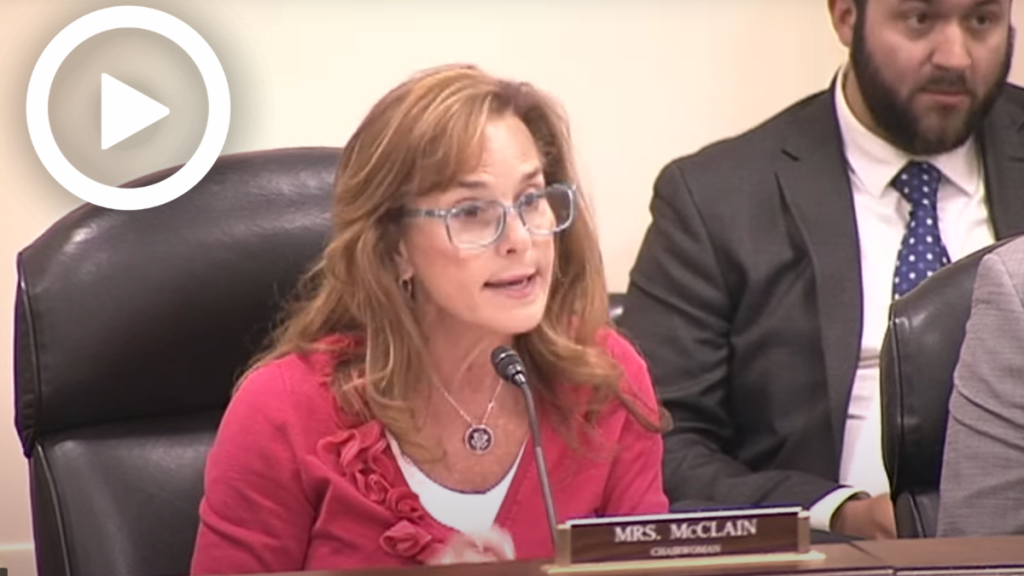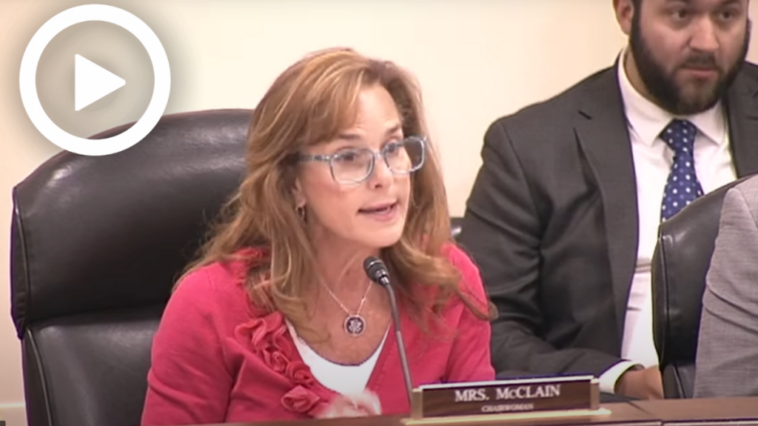
Congressional Scrutiny of FDA’s Hemp Oversight
The recent decision by a congressional oversight committee to schedule a hearing on the Food and Drug Administration’s performance in regulating hemp-derived products has sparked widespread debate. The committee’s invitation to a hemp industry representative to testify on the agency’s “failure” to properly approve and enforce rules around products like CBD highlights a growing frustration among industry experts and consumers alike. This editorial takes a closer look at the tangled issues behind the regulatory framework, examines the state versus federal battles, and explores what these developments mean for the cannabis and hemp markets going forward.
Testimony and the Call for Regulatory Reform in Hemp Products
During the upcoming House Oversight Committee hearing titled “Restoring Trust in FDA: Rooting Out Illicit Products,” Jonathan Miller of the U.S. Hemp Roundtable is set to testify against a backdrop of long-standing concerns. Miller, whose organization has been vocal about the ambiguous and often intimidating regulatory landscape, will use his testimony to update lawmakers on the confusing bits and challenges that have plagued the hemp industry since the 2018 Farm Bill legalized the crop federally.
Miller’s intended discussion promises to poke around the following topics:
- The FDA’s apparent inability to take necessary enforcement actions against a rising tide of illicit and counterfeit products.
- The severe regulatory gaps that have left the hemp market exposed and vulnerable to bans by individual states.
- The potential for bipartisan reform, including proposals like the bill filed by Sen. Ron Wyden to create a federal framework for hemp-derived cannabinoids.
The call for stronger oversight is not simply about compliance—it is about protecting consumers, ensuring public safety, and restoring trust in a regulatory system that has, for many, been off-putting and nerve-racking due to its perceived inaction. Viewed as an update on issues raised in previous congressional meetings, Miller’s testimony underscores the need for a well-organized, enforceable regulatory framework that can address the many twists and turns of the current hemp market.
State Versus Federal Regulation: The Tussle Over Hemp Policy
One of the most pressing issues in the ongoing debate is the battle between state and federal policies concerning hemp and cannabis-derived products. While the federal government has taken steps to legalize hemp under specific conditions, many states have independently chosen to tighten or broaden the scope of hemp-related laws based on regional concerns and local market realities.
This incongruence has led to a patchwork of regulations that creates a number of problematic areas, including:
- Regulatory Overlap: States like California, Florida, and others have experimented with their own rules to govern products that are federally legal yet remain unregulated at the national level.
- Proposal Deadlock: Bipartisan bills aimed at restructuring hemp and cannabinoid regulations face hurdles, as they must reconcile the fine points of federal oversight with state-level autonomy.
- Market Disruption: Inconsistent regulations lead to market fragmentation, undermining consumer confidence and stoking uncertainty among producers and retailers.
The challenges here are more than just the nitty-gritty of legislative proposals—they stem from a broader, ongoing struggle to find your way through a system that is both layered and contradictory. The lack of a coherent regulatory blueprint has resulted in a situation where states, unable to rely on a standardized federal policy, attempt to craft their own rules. This fragmented approach has only added to the nerve-racking uncertainty for businesses in the hemp sector.
Economic Ramifications and Industry Impact
One of the underlying drivers of the recent congressional hearing is the accelerating economic impact of hemp on both state and national levels. Despite the challenges posed by regulatory ambiguities, the hemp market continues to grow and even, according to recent reports, rival well-established industries such as state marijuana markets and craft beer production.
Economic experts point out several key benefits as well as downfalls of the current regulatory system:
- Market Growth: With supporters highlighting how hemp contributes significantly to state economies, there is a growing call for a uniform set of regulations that would foster further innovation and competition.
- Job Creation: As businesses continue to shift gears toward hemp and CBD products, there is an increasing need for workforce training programs—efforts that have already been seen in states like New York.
- Regulatory Uncertainty: The lack of clear guidelines from the FDA has left many businesses in a state of limbo, which in turn restrains potential investment and disrupts supply chains.
A comparison table below illustrates some of the perceived benefits and current hurdles facing the hemp market:
| Aspect | Perceived Benefit | Existing Challenge |
|---|---|---|
| Market Growth | Rapid expansion and high consumer demand | Lack of standard federal guidelines |
| Job Creation | Increased employment in agriculture and processing sectors | Insufficient workforce training programs |
| Regulatory Clarity | Potential for a stable business environment | Continued state-by-state regulatory divergence |
The table not only paints a picture of growth but also underscores the trickier parts of finding your way through a maze of regulatory expectations. Without a unified federal approach, the hemp market remains a double-edged sword—offering significant economic opportunities even as it navigates the dangerous waters of inconsistent policy enforcement.
The Bipartisan Push for a Unified Guide on Hemp and CBD
An important element in the current debate is the bipartisan support for legislative proposals that aim to deliver a consistent framework for hemp-derived cannabinoids. A bill proposed by Sen. Ron Wyden of Oregon is building momentum among lawmakers, offering states the flexibility to set their own standards while still giving the FDA the power to enforce critical safety measures across the board.
Advocates argue that this approach could effectively address several of the small distinctions that have, until now, created an unfriendly regulatory environment. Specifically, this framework is seen as a step toward:
- Elevating consumer safety by standardizing product quality and labeling.
- Providing clarity for producers, helping them steer through the maze of current regulations.
- Promoting economic stability in a market that has so far been undercut by regulatory delays and arbitrary enforcement.
Supporters of the bill believe it offers an essential foundation for the future of cannabis and hemp marketing in the United States. Drawing on experiences from other industries that have successfully managed tricky authorization processes, many policy analysts contend that a well-crafted federal framework is within reach—if lawmakers can find their way around the inherent twists and turns of the legislative process.
Cannabis Legalization: Public Opinion and Policy Implications
Beyond the immediate concerns of FDA enforcement and hemp regulation, an important facet of this debate is the shifting public sentiment regarding cannabis legalization. Recent polls suggest that a significant majority of Americans now support the complete legalization of marijuana. In fact, surveys show that only about 11% of Americans favor prohibition, a statistic that contrasts sharply with past attitudes toward cannabis.
This cultural shift is at the heart of broader discussions about public safety, economic opportunity, and criminal justice reform. As one expert succinctly put it, “These policies are largely working as intended because voters prefer legalization and regulation over the failed policy of prohibition.”
The implications for policy are wide-ranging. With 88% of Americans backing legalization in some form—and a 57% majority favoring a system that allows medical and adult use—the pressure is mounting on legislators to not only adjust statutes but also to create supportive infrastructure, such as:
- Workforce training programs aimed at educating industry workers.
- Economic initiatives to foster growth in medical and recreational sectors.
- Public safety campaigns that move away from stigmatizing stereotypes.
Given these statistics, it becomes clear that the existing regulatory system, plagued by confusing bits and a lack of clear federal guidelines, is out of step with both public opinion and economic realities. The vote for change is as strong as the market forces demanding better regulation.
Examining the FDA’s Role: Gaps and Accountability
The FDA’s role in regulating hemp and related products has been the subject of repeated scrutiny. Critics argue that the agency has been slow to take action and overly cautious in its approach to enforcing safety standards. Despite the legalization of hemp at the federal level, the agency has yet to establish comprehensive guidelines that balance consumer safety with industry growth.
Some of the most frustrating aspects include:
- Lack of Clear Standards: Many businesses have been left to navigate an off-putting and inconsistent regulatory system, with little guidance on how to comply with either federal or state laws.
- Enforcement Gaps: Without strict enforcement measures, the market has seen an influx of counterfeited and subpar products, which further erodes consumer trust.
- Regulatory Paralysis: The shift in FDA priorities has allowed several problematic products to flood the market, making it difficult for well-established producers to compete.
For many observers, it’s not just that the FDA has been slow—it’s that the agency has failed to address a series of twisted issues that have emerged since hemp became federally legal. In the absence of coherent policies, producers are left to figure a path on their own, which in turn creates opportunities for harmful products to undermine the entire market.
Understanding the Broader Market Impact
The ripple effects of inconsistent regulation extend beyond the immediate concerns of quality and consumer safety. The hemp market, once hailed as a bright new opportunity, now faces multiple hurdles that could stunt its growth if left unchecked.
Key market impacts include:
- Financial Instability: Without a standardized federal framework, investors and producers alike find themselves in a state of uncertainty, potentially stalling critical expansion plans.
- Legal Battles: The current state versus state and state versus federal fight has led to a legal patchwork where every region’s rules differ markedly, creating an environment that is both tense and unpredictable.
- Consumer Confidence: As subpar products enter the marketplace unchecked, the trust consumers place in hemp-derived products erodes over time, making it tougher for reputable brands to compete.
The prevailing uncertainty reminds one of trying to steer through a storm without reliable guidance. Each state, with its own set of rules and enforcement practices, essentially becomes an island of regulation in a sea of ambiguity. This fragmentation not only hampers economic progress but also creates an environment that could eventually jeopardize the health and safety of consumers.
Working Through the Challenges: Legislative and Regulatory Proposals
In light of the regulatory challenges that have built up over recent years, both industry advocates and lawmakers are actively looking for solutions. The bipartisan push for reform has brought forward proposals designed to tackle the confusing bits and tangled issues head-on. One of the most talked-about proposals is the bipartisan bill spearheaded by Sen. Ron Wyden, which seeks to create a federal framework for hemp-derived products.
This proposal is built around several key concepts:
- State Flexibility: Allowing individual states to craft rules that reflect their unique market conditions while still adhering to a basic federal standard.
- Enhanced FDA Authority: Empowering the FDA to enforce critical safety measures and ensure that products meet consumer safety requirements.
- Industry Protection: Providing legal clarity and a more predictable environment for hemp producers, which in turn could lead to increased investment and further market growth.
This approach reflects a broader consensus among stakeholders who agree that the current system, laden with problematic regulatory practices, simply cannot continue as it is. The goal is to replace a patchwork of state-led regulations with a well-thought-out, cohesive strategy that benefits all parties involved—the industry, consumers, and the government alike.
The Future of Cannabis Policy: Trends and Predictions
As legislators, industry leaders, and consumers continue to grapple with the challenges of hemp and cannabis regulation, several trends are emerging that could define the future of this market:
- Growing Public Support: With an overwhelming majority of Americans now favoring some version of cannabis legalization, public pressure is likely to push lawmakers toward more progressive reforms.
- Economic Revitalization: States that take steps to integrate a unified regulatory system may see a boost in local economies, driven by job creation and increased consumer spending.
- Improved Public Safety: Clearer guidelines and stricter enforcement policies will not only protect consumers from unsafe products, but also help re-establish trust in the hemp market.
It is clear that the industry is at a crossroads. On one path, there is continued regulatory chaos that could ultimately hinder market growth, and on the other, a potential breakthrough where a more predictable and supportive framework is put in place. Many believe that with sustained bipartisan cooperation, we can eventually dig into the deep-seated issues and correct the course of hemp regulation for the betterment of all stakeholders.
Real-World Implications for Veterans and Healthcare
While the congressional hearing on the FDA’s regulatory practices primarily addresses hemp products, it is worth noting that a similar spirit of reform is visible in other areas of cannabis policy. Recently, bipartisan efforts have emerged around the idea of creating VA research centers dedicated to exploring the potential of psychedelics for treating veterans. While these proposals diverge from the immediate issues of hemp oversight, they share a common objective: reforming regulatory policies that have long been riddled with problems.
This cross-sector initiative highlights some important points:
- Healthcare Innovation: By supporting research into psychedelic-assisted therapies, policymakers aim to tackle the complicated pieces of veteran mental health challenges with innovative treatment options.
- Bipartisan Cooperation: Much like the proposals to streamline hemp regulation, efforts to create VA research centers demonstrate that there is room for consensus even on issues that have historically been controversial.
- Breaking Down Stigmas: Both sectors—hemp regulation and psychedelic research—face the daunting task of overcoming outdated stigmas and garnering public trust through evidence-based policy measures.
These initiatives serve as a reminder that the call for reform is not limited to a single product or industry. Instead, they collectively point to a broader need for policymakers to catch up with the evolving dynamics of healthcare and economic opportunity in modern America.
Consumer Perspectives: Shifting Attitudes Toward Hemp and Cannabis
The consumer landscape is evolving rapidly, largely in response to what many view as outdated or confusing regulatory practices. Recent surveys indicate that nearly 90% of Americans support some form of cannabis legalization, with a notable shift in attitudes even among conservative voters. Such findings suggest that the public is ready to embrace a more coherent and transparent approach to regulation—one that would allow them to make informed decisions about the products they use.
Key observations from consumer trends include:
- Preference for Regulation Over Prohibition: A significant majority of consumers believe that regulated markets are safer and more beneficial to society than outright bans.
- Economic Incentives: Consumers understand that a well-regulated market can stimulate local economies through job creation and improved consumer access.
- Demand for Consistency: There is growing frustration over the little twists in rules that vary from state to state, leading to calls for a uniform national policy that delivers on both safety and quality.
In an environment where the market is evolving and public support is shifting, the onus is on policymakers to take a closer look at these consumer sentiments. Doing so not only underlines the importance of transparency and accountability but also reinforces the idea that modern regulatory frameworks can propel the industry forward rather than hold it back.
Lessons From Other Industries: Drawing Parallels for Reform
Other industries that have faced similar regulatory challenges provide valuable lessons for the current state of hemp oversight. For example, the food and beverage sectors underwent significant transformation after facing overwhelming public demand for clearer standards and accountability. Much like those industries, the hemp market today is ripe for a regulatory overhaul that could unlock vast economic benefits while ensuring public safety.
Some of the tangible takeaways include:
- Standardization Leads to Trust: When government agencies establish consistent guidelines, it helps rebuild consumer confidence and promotes steady market growth.
- Collaboration Is Key: Successful reform often comes from a collaborative approach involving government, industry, and consumer groups—a model that is beginning to take shape in hemp-related policies.
- Flexibility and Local Adaptation: A federal framework that allows states some leeway while maintaining core national standards can help manage the varying regional needs, much like what has been seen in other sectors.
The above points emphasize that while the FDA and lawmakers have a long way to go, they are not alone. There is a wealth of experience from other fields that can help guide the restructuring of current policies into something that is both fair and forward-looking. The ultimate goal is to replace an inefficient, patchy system with one that is clear, consistent, and capable of supporting not only market growth but also public well-being.
Community and Industry Reactions: Voices on Both Sides
Responses to the latest congressional hearing have been mixed but largely reflect the urgent need for change. On one hand, industry insiders like Jonathan Miller are urging a swift legislative response to ease the regulatory maze that has hindered product innovation and market growth. On the other hand, some consumer advocates caution that any new framework must prioritize safety and transparency to prevent another round of problematic products flooding the market.
Key community reaction themes include:
- Demand for Unified Action: Many industry observers stress that establishing a cohesive rule book is super important to bridge the gap between federal and state regulations.
- Balancing Safety and Innovation: Consumer groups argue for rigorous enforcement measures even as legislators seek to ease restrictions, ensuring that the market remains both dynamic and secure.
- The Call for Bipartisan Solutions: With political divides still evident in many policy areas, the hemp sector uniquely offers an opportunity for bipartisan cooperation. Both Republicans and Democrats have voiced support for reforms that would address these tangled issues head-on.
Overall, these community voices underscore a common sentiment: the current system is not sustainable. Whether viewed as a hindrance to economic opportunity or as a risk to public safety, the prevailing call is for decisive, unified action that can finally bring clarity to an area that has long been overloaded with conflicting regulations.
A Roadmap for the Future: What Needs to Change
Looking ahead, several steps can be taken to move from a system defined by oversight and regulatory voids to one that is robust, modern, and responsive to current market demands. Based on industry feedback, consumer input, and historical lessons from other sectors, the following action points are emerging as super important:
- Implement a Federal Framework: A nationally standardized set of guidelines should be established. This framework must give the FDA the authority to enforce safety standards while allowing localized adjustments to fit regional market conditions.
- Enhance Inter-Agency Collaboration: In addition to working within federal and state boundaries, coordination between various agency bodies will be essential to address overlapping responsibilities and ensure that the final rules are both comprehensive and flexible.
- Institute Regular Review Mechanisms: Given the rapid pace of change in consumer preferences and product innovation, the regulatory framework should include provisions for periodic review and updates. This will help to steer through unexpected market shifts without letting manufacturers or consumers remain in legal limbo.
- Increase Transparency and Public Engagement: Establishing a clearer communication channel between regulators and the public ensures that everyone—especially those directly affected—is well informed about policy changes and the underlying rationale.
Each of these points represents a crucial stepping stone toward correcting the current regulatory drift. By focusing on these key areas, lawmakers and regulators can begin to figure a path that is both predictable and adaptable—a pathway that ultimately benefits consumers, businesses, and public health interests alike.
Final Thoughts: Embracing Change for a More Secure Future
The congressional hearing on the FDA’s handling of hemp regulation is a microcosm of the broader challenges facing the cannabis and hemp industries today. With a market rich in potential yet hampered by inconsistent guidelines and left to fend off illicit products, the need for reform is undeniable. While the work ahead is full of problems and unpredictable twists and turns, the movement towards a more rational, unified regulatory approach is gathering momentum.
Reforming the system requires both a willingness to address the intimidating challenges head-on and a commitment to the kind of bipartisan cooperation that can bridge divergent viewpoints. Whether it is through establishing a federal framework for hemp-derived cannabinoids, improving consumer safety measures, or aligning state and federal strategies, the path to progress is clear—albeit strewn with complicated pieces and nerve-racking obstacles.
For consumers, industry players, and policymakers alike, this is a moment of reckoning. It is an opportunity to turn a system that has long been random and on edge into one that is transparent, trustworthy, and capable of fueling an emerging economy. The debate over hemp regulation, with its many fine points and small distinctions, is far from over. However, if the current momentum is any indication, clearer skies may be on the horizon for one of the country’s most vibrant markets.
Summary Table: Key Issues and Proposed Solutions in Hemp Regulation
Below is a summary table that encapsulates the main challenges and forward-thinking proposals discussed above:
| Challenge | Explanation | Proposed Solution |
|---|---|---|
| Regulatory Gaps | Unclear FDA guidelines allow illicit and counterfeit products | Establish a federal framework with clear standards |
| State vs. Federal Disconnect | Fragmented and inconsistent rules hamper market growth | Provide states with flexibility while enforcing national safety standards |
| Economic Uncertainty | Investor hesitancy and market fragmentation due to inconsistent oversight | Implement regular review mechanisms and transparent enforcement practices |
| Consumer Safety | Widespread distribution of low-quality products harms public trust | Empower the FDA to enforce vital safety protocols consistently |
Conclusion
In summary, the latest congressional hearing on the FDA’s regulatory approach to hemp products is more than a political event—it is a critical juncture for an industry that is adapting to rapid changes in consumer demand and legal norms. The evidence is clear: millions of Americans support a system of regulated cannabis products, and the economic and social benefits of reform are too significant to ignore.
As the debate continues, stakeholders are called upon to work together to steer through the maze of state and federal policies. While the journey is loaded with issues and confusing bits, the common goal remains the same—establish a transparent, consistent, and effective regulatory environment that supports growth, innovation, and public safety.
This moment in legislative history represents a chance to replace years of ad hoc measures with a thoughtful plan for the future. For the hemp industry and for the millions of Americans invested in a more progressive approach to cannabis policy, the time for change is now.
Originally Post From https://www.marijuanamoment.net/congressional-committee-invites-hemp-industry-expert-to-testify-at-hearing-on-how-fda-failed-to-regulate-products/
Read more about this topic at
Hemp Industry 2024: State and Federal Changes
Hemp | Home


